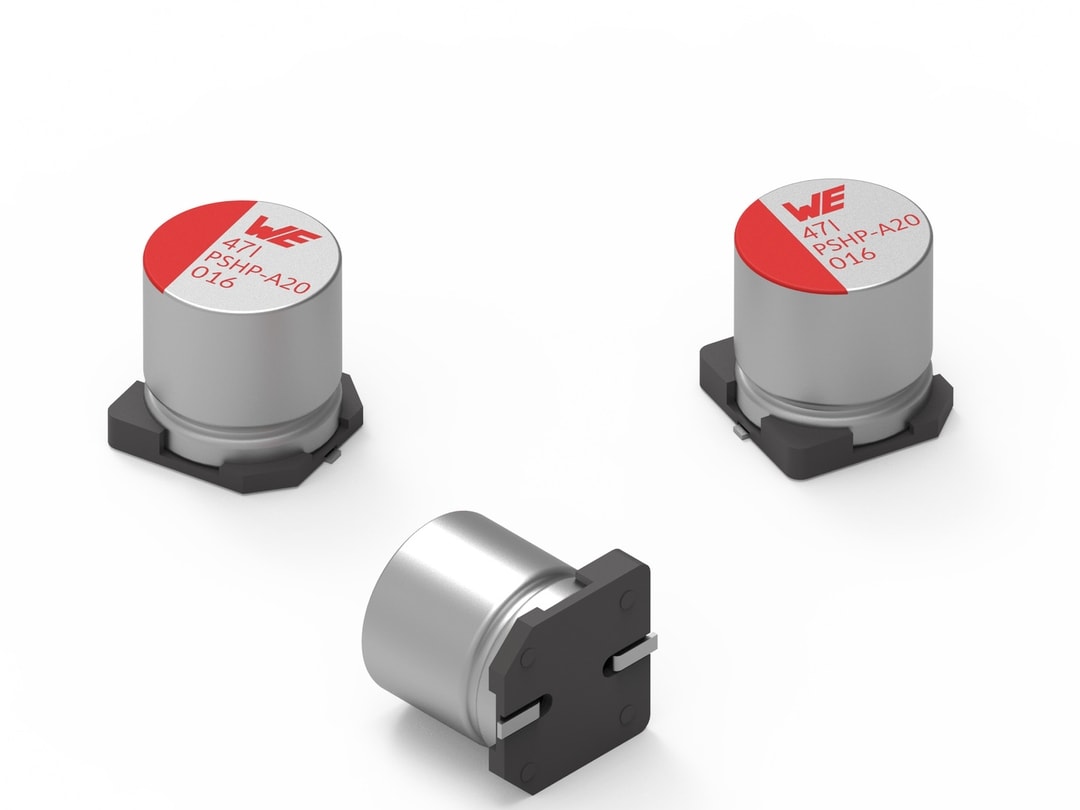
Our last two blog posts have covered the technical basics of the two main types of aluminum capacitors (traditional electrolytic and solid polymer) as well as the pros and cons of the traditional sort.
In this post, we will look specifically at the polymer type and how it compares to the traditional construction. We will conclude our blog series on capacitors with an overview of the enemies and applications of aluminum electrolytic capacitors in general.
At first, the construction of polymer capacitors seems similar to that of aluminum electrolytic capacitors — you have the anode foil, the cathode foil, and different paper separators in between.
But the similarities stop there. Instead of a liquid electrolyte, the polymer capacitor has a certain monomer that will be filled into the separator element. Afterward, the so-called aging process (or drying process) will begin. After a period of two and eight hours, the polymerization process will start, and eventually the liquid monolayer will be transformed into a solid polymer.
Here are some of the current developments in the realm of polymer electrolytic capacitors:
5.000h —> 10.000h —> 20.000h
125 and 150°C
100V - 125V
ESR << 3,5mOhm
Now for the million-dollar question: Are polymer electrolytic capacitors or traditional electrolytic capacitors the better option for engineers? The answer depends on your design needs, as there are unique advantages to each.
Pros of aluminum electrolytic capacitors:
Pros of polymer electrolytic capacitors:
Remember that the lifetime of polymer electrolytic capacitors is calculated with a different formula. For more information about lifetime check the Support Note 019.
In the end, it's up to you to decide which type of aluminum capacitor will work better for your design. If you need a cheaper option with higher voltage ratings, stick with the traditional sort; however, if you're willing to pay a little extra for better performance, try the polymer sort.
Whichever type of aluminum capacitor you go with, note that both types have at least three enemies that will decrease their lifetime:
Finally, let's end our discussion with a brief introduction to the various applications of capacitors.
Among the three main types of capacitors — ceramic, film, and aluminum electrolytic — there are several applications that would work with two or all types. Applications that overlap all three areas include:
Some applications only work with aluminum electrolytic capacitors. These include:
And then there are a few applications that could work with either aluminum electrolytic capacitors and ceramic capacitors or aluminum electrolytic capacitors and film capacitors:
If you are searching for a high-capacitance solution for one of these applications, consider using aluminum electrolytic capacitors. While you may be tempted to use ceramic or film capacitors, alternatives like polymers may very well give you a much better performance.
